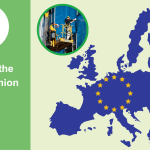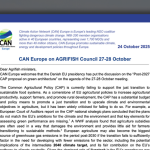Montenegro has introduced own cap and trade system for its major CO2 emitters (1), thereby signaling the beginning of the end to free emissions in countries of the Western Balkans – region that’s home to some of Europe’s most polluting coal-fired power plants (2). Nevertheless, to succeed, the Montenegrin scheme will need a tighter cap.
The introduction by Montenegro of its cap and trade system for main CO2 emitters follows the adoption last December of the country’s Law on Protection from the Negative Impacts of Climate Change and has just entered into force, as required also by recently opened Chapter 27 of the EU-membership candidate’s accession talks, which groups environmental and climate change issues.
“This is good news and the direction in which all members of the Energy Community – Western Balkan countries working to integrate their energy markets with the EU – should pursue, especially when, to date, most of them failed to comply with EU emission standards,” says Viktor Berishaj, Energy Policy Coordinator for Southeast Europe at Climate Action Network (CAN) Europe.
This is also timely given the Energy Community is exploring carbon pricing mechanisms, as well as ongoing talk of EU carbon border adjustment.
“Nevertheless, the planned free allowances account only for the current, insufficiently ambitious Montenegrin NDC from 2017. This year national contributions will be revised, hence making the reduction of allowances by 1.5% per annum until 2030 lacking in serious ambition. There should be a rapid plan to phase out pollution permits and move to a 100% auctioning system.” says Berishaj, and concludes that: “If there is something to be learned from the EU’s cap and trade is that there must be a tight cap, much tighter than what is proposed for the carbon market to work.”
The scheme does not account for any specific decarbonisation goals, nor does it connect to current policy-making processes such as the drafting of the NECPs or setting of 2030 targets for the region by the Energy Community Secretariat, expected in 2021.
About two-thirds of the free allowances are reserved for the Pljevlja thermal-power plant and the Aluminum Plant Podgorica, accounting for about 90% of the total GHG emissions in Montenegro. The allowances for Pljevlja plant are planned to be reduced by 5% annually until 2025, when the free credits end. Montenegro has chosen the opt-out from the Large Combustion Plant Directive. This limits the power plant to 20,000 operating hours (or approximately 27 months) from January 2018 to December 2023. Based on its current operating hours, the plant’s time limit is expected to run out already in October 2020. No allowances should be issued for the period while the plant is undergoing renovation, otherwise the scheme will be undermined by a surplus.
ENDS
Notes:
(1) https://www.energy-community.org/news/Energy-Community-News/2020/02/24.html
(2) https://bankwatch.org/publication/comply-or-close-how-western-balkan-coal-plants-breach-air-pollution-laws-and-what-governments-must-do-about-it
Contacts:
Viktor Berishaj, Energy Policy Coordinator for Southeast Europe, CAN Europe, Mob +32 470 588 001, viktor@caneurope.org
Stevan Vujasinovć, Communications Coordinator for Southeast Europe, CAN Europe, Mob +381 63 390 218, stevan@caneurope.org
Climate Action Network (CAN) Europe is Europe’s leading NGO coalition fighting dangerous climate change. With over 160 member organisations from 35 European countries, representing over 1.700 NGOs and more than 47 million citizens, CAN Europe promotes sustainable climate, energy and development policies throughout Europe.



